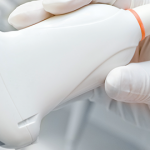
designer491/shutterstock.com
WASHINGTON, D.C.—“Rheumatic manifestations are [often] the initial presentation of a systemic disease, but they can [also] occur during the course of the disorder,” said Joseph Markenson, MD, speaking in the ACR/ARHP Annual Meeting talk, Rheumatic Manifestations of Endocrine Disease, during the ACR Review Course.
Dr. Markenson is professor of clinical medicine and a rheumatologist at Weill Cornell Medical College, New York. He gave an overview of what can be a tricky intermingling—rheumatic manifestations of endocrine disease—and also offered tips on what to look for so patients can get the treatment they need. Residents at Dr. Markenson’s college are taught that when someone comes in with swollen joints, they shouldn’t leap to the conclusion that it’s gout or another rheumatic disorder at work, but they should think about the possibility of other diseases in internal medicine that can present with arthritic manifestations.
“Think of all the diseases that are not in our field, so you don’t miss anything,” he cautioned attendees.
He offered these tips on what signs and symptoms to look for in an array of endocrine disorders:
- Hypothyroidism involves a symmetrical arthropathy—stiffness in the hands and knee joints—and the joints have a gelatinous feel when palpated. Occasionally, calcium dehydrate deposition pyrophosphate crystals (CPPD) will be found.
- Hypothyroid myopathy presents as pain, cramps, stiffness, a tendency to become fatigued easily and weakness. The physical exam will reveal muscle hypertrophy, proximal muscle weakness and delayed relaxation of deep tendon reflexes.
- Hyperthyroidism, or Graves disease, typically includes pretibial myxedema (a non-pitting edema with pink or light purple or blue nodules), Graves ophthalomopathy, proximal muscle weakness, adhesive capsulitis, muscle mass, weight loss, osteopenia, changes to the nails and clubbing.
- Hyperparathyroidism presents clinically as arthralgia, synovitis, gout and proximal muscle weakness. Electromyography and muscle biopsy often show denervation, but with normal enzyme levels. On X-ray, the most common findings will be in the clavicle, hand and toe bones, and humerus, with sawtooth-like erosions along the phalanges. Erosions similar to those seen in RA might also be seen in the hands and wrists, Dr. Markenson said.
- Hypoparathyroidism—low parathyroid hormone due to autoimmune destruction or to surgery—can involve surgically induced muscle weakness due to hypocalcemia, which can be helped with supplements. It can also involve renal osteodystrophy, marked by lowered osteoblastic function and bone formation rate.
Diabetes & Rheumatic Disease
In diabetes, related rheumatic issues previously attributed to lowered sensitivity of nerve endings are now thought to be caused by such neurovascular factors as increased blood flow to the subchondral bone, which boosts activity of osteoclasts and causes increased bone resorption.



